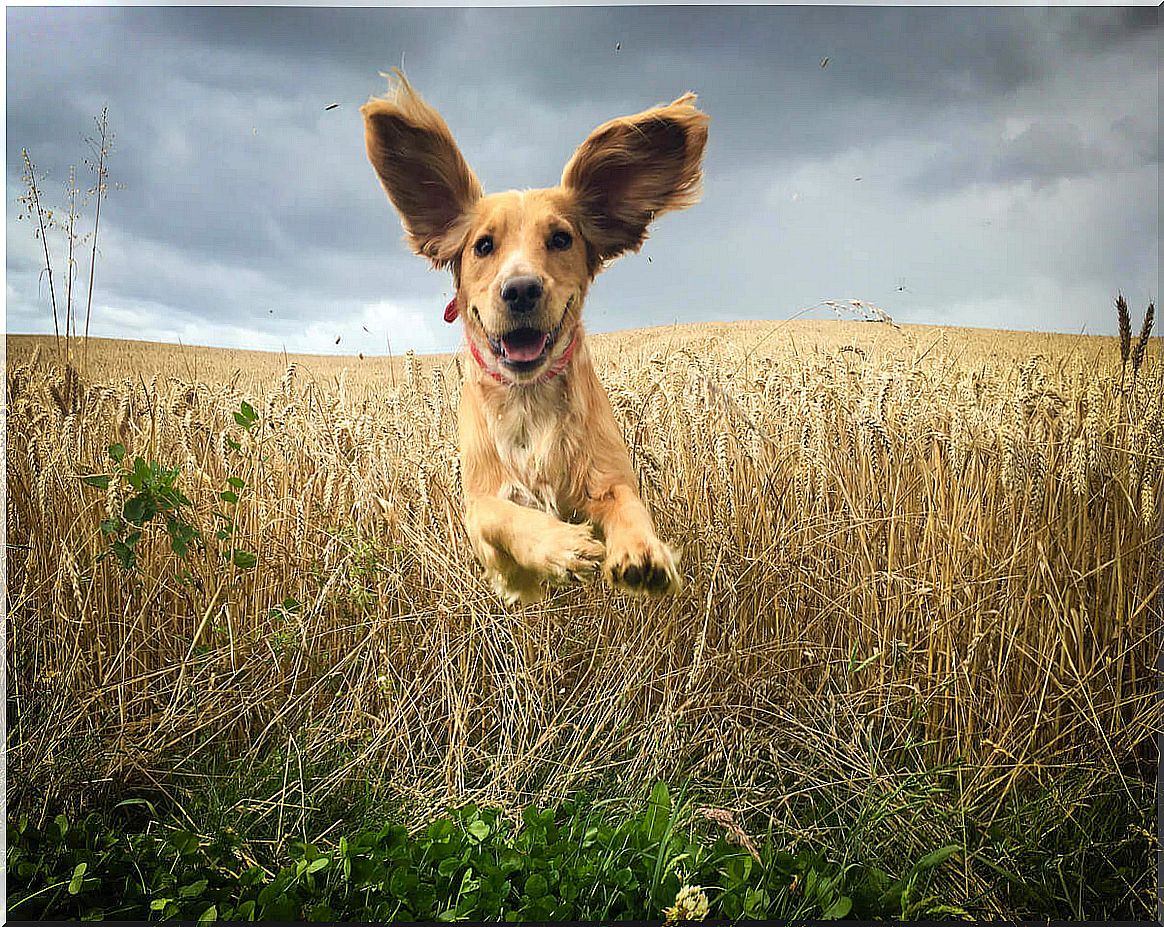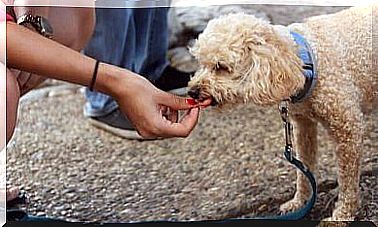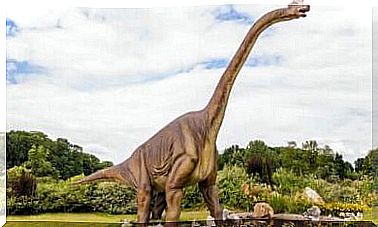A Dog’s Origins According To Its Ears

Dogs come in a wide variety of shapes and sizes. It’s hard to imagine that a great Great Dane and a small poodle are the same species. However, they are genetically identical and have the same anatomical features. But can a dog’s origins be deduced from its ears?
Of course, a dog’s ears are one of the most remarkable parts of its anatomy. In addition to the sensory function, they express a good part of the dog’s character and personality. Next, we’ll reveal all the secrets of these fascinating sensory structures.
The origins of a dog have been studied
Gray wolves and dogs are descendants of a species of wolf that became extinct about 15,000 to 40,000 years ago. There is general scientific consensus on this point, but controversy abounds over where domestication began.
The event is not trivial: where an initially feared animal has become the closest domestic companion to human beings. Genetic studies have identified evidence in many places, from southern China to Mongolia and Europe.
From these findings, the hypothesis emerged that the dog may have been domesticated from the wolf, more than once in different places.

Man’s hand in the formation of canine breeds
Humans have played an important role in creating dog breeds that meet different social needs. Using rudimentary genetic engineering, dogs were bred to accentuate a set of specific traits through artificial selection.
These processes impacted patterns of genetic variation. They have also resulted in a higher incidence of deleterious mutations, as well as a high prevalence of inherited diseases, which vary specifically between dog breeds.
Apparently, the man’s hand also played a less direct role in the appearance of the modern dog. Scientists, comparing the morphology of domestic animals with wild animals, postulated the theory of the “domestication syndrome”.
Over the past hundred years, a wide variety of breeds have been formed from the ancestral set of canine genes. According to this theory, animals subjected to domestication undergo morphological changes that include the appearance of drooping ears.
From the origins of a dog to its typology
According to evidence from fossil remains, at the beginning of the Bronze Age (around 4,500 BC) there were already five different types of dogs :
- The mastiff.
- Wolf dogs.
- Hunting dogs (such as Saluki or Greyhound).
- Pointing dogs ( pointers ).
- Pastors.
Dog Ear Shape
Early breeds had erect ears and pointed or wedge-shaped snouts, similar to the northern breeds common today. Today, dogs’ ears come in many different shapes: small, long, wide or V-shaped, but they are generally classified into three main groups:
- Flexible or drooping (eg dogs of the hunting hound group, such as the Dachshund ),
- Upright (eg West Highland White Terrier , Pinscher or Yorkshire terrier , German Shepherd or Siberian Husky )
- Semi-erect (eg Collie or Shetland sheepdog ).
There are lists of dog breeds that illustrate each of these three ear shapes.
Does genetics dictate the shape of a dog’s ears?
Several scientific studies have identified a region on chromosome 10 that has high levels of genetic differentiation between dog breeds. This region of DNA seems to be associated with body mass and the shape of the ears.
According to these studies, this chromosomal region contains genetic variants that affect ear type and body mass. Thus, experts suggest that small mutations are responsible for these characteristics.
Another recent survey analyzed a catalog of canine genomes from 1417 dogs corresponding to 193 breeds and 9 wild canids. In this study, genes that determine the shape and size of canine ears were investigated.
The authors discriminated between breeds with pricked ears (101 dogs) and drooping ears (113 dogs), and identified a significant association between the presence of a specific gene (with a regulatory function on other genes) and drooping ear morphology.
Likewise, they were able to identify an association between the expression of two specific genes and the shape of large, round ears (eg, breeds like the Spaniel , Beagle and Corgi ). These genes are not detected in dogs with standard-sized triangular ears (such as Eurasier or Miniature Pinscher ).

In short, it is possible to know the origins of a dog by its ears. The genetic variability that translates into the shape of your dog’s ears will no longer be a secret.









